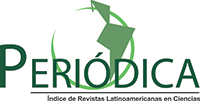Wastewater coliforms removal by vegetal species
DOI:
https://doi.org/10.5216/ree.v7i3.902Keywords:
Saúde Ambiental, Plantas de Tratamento de Águas Residuais, SaneamentoAbstract
This study aimed to assess the efficiency of substrates and of native or naturalized vegetal species from Goiânia (Goiás, Brazil) region on coli forms removal from a sanitary wastewater at a treatment with a rootzone likewise system, with downward flow, after previous decantation. After passing through the decantation box, primarily wastewater was daily applied on the treatment boxes with the following vegetal species: narrow leaf cattail (Typha angustifolia L.), white ginger (Hedychium coronarium J. König), Job’s tears (Coix lacryma-jobi L.) and Para grass (Urochloa mutica (Forssk.) T.Q. Nguyen), cultivated on sand and/or coconut fibre substrates. Sixteen treatment modules were built up, grouped four to four with a two meter spacement and using a split plot design, where the plots were assigned as substrates, and vegetal species as subplots. Replications were assigned as two monthly wastewater samplings. The biological attribute coli forms was determined on raw, primarily and secondary wastewater samples. Efficiency values were been submitted to Tukey-Kramer test. The rootzone treatment system revealed to be very efficient to withdraw coli forms, reaching levels near the totality. Vegetal species worked similarly on fecal coli forms removal, and coconut fiber substrate was less efficient then the substrates with sand.
Downloads
Published
Issue
Section
License
Copyright (c) 2006 Revista Eletrônica de Enfermagem

This work is licensed under a Creative Commons Attribution 4.0 International License.














